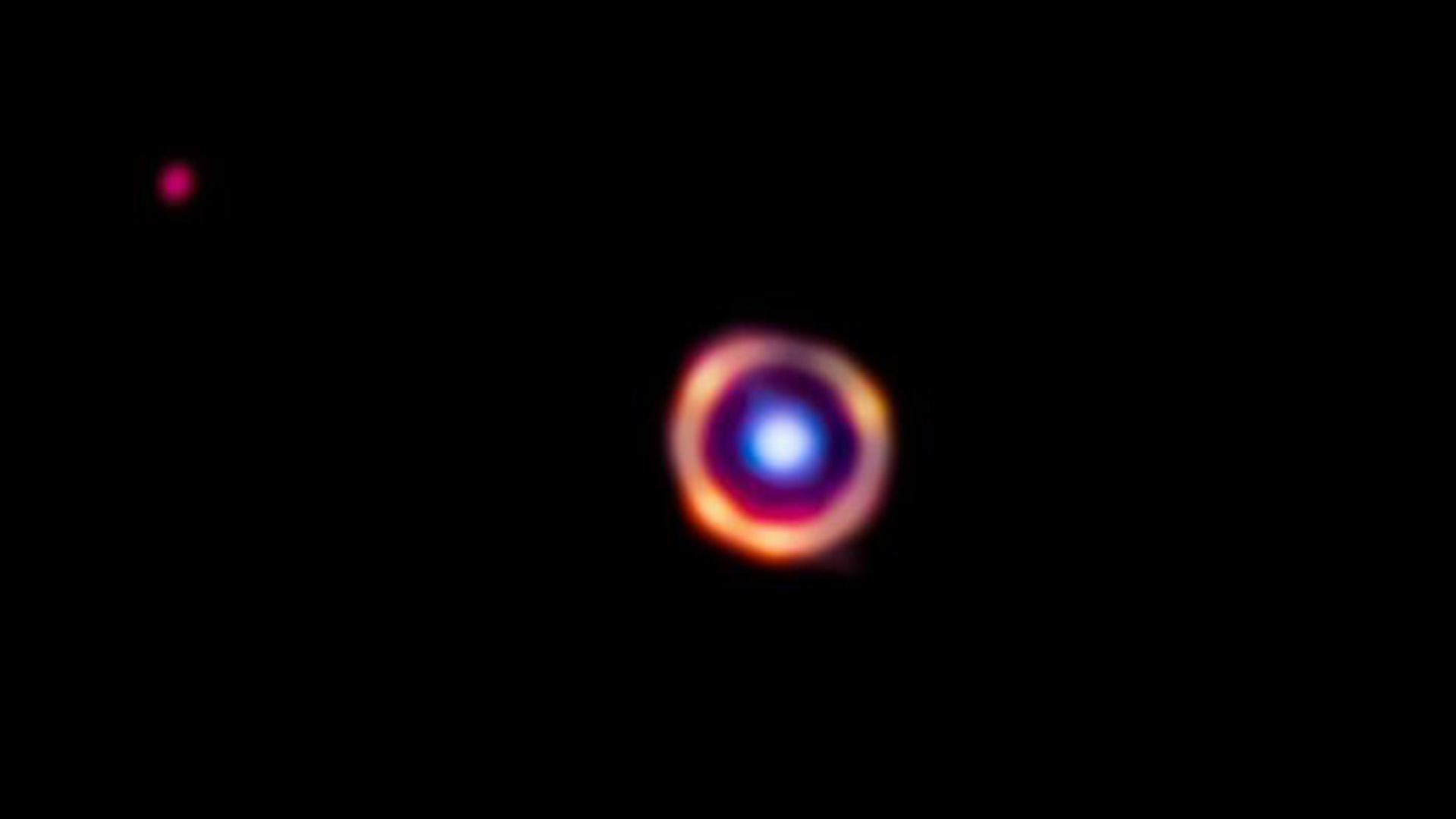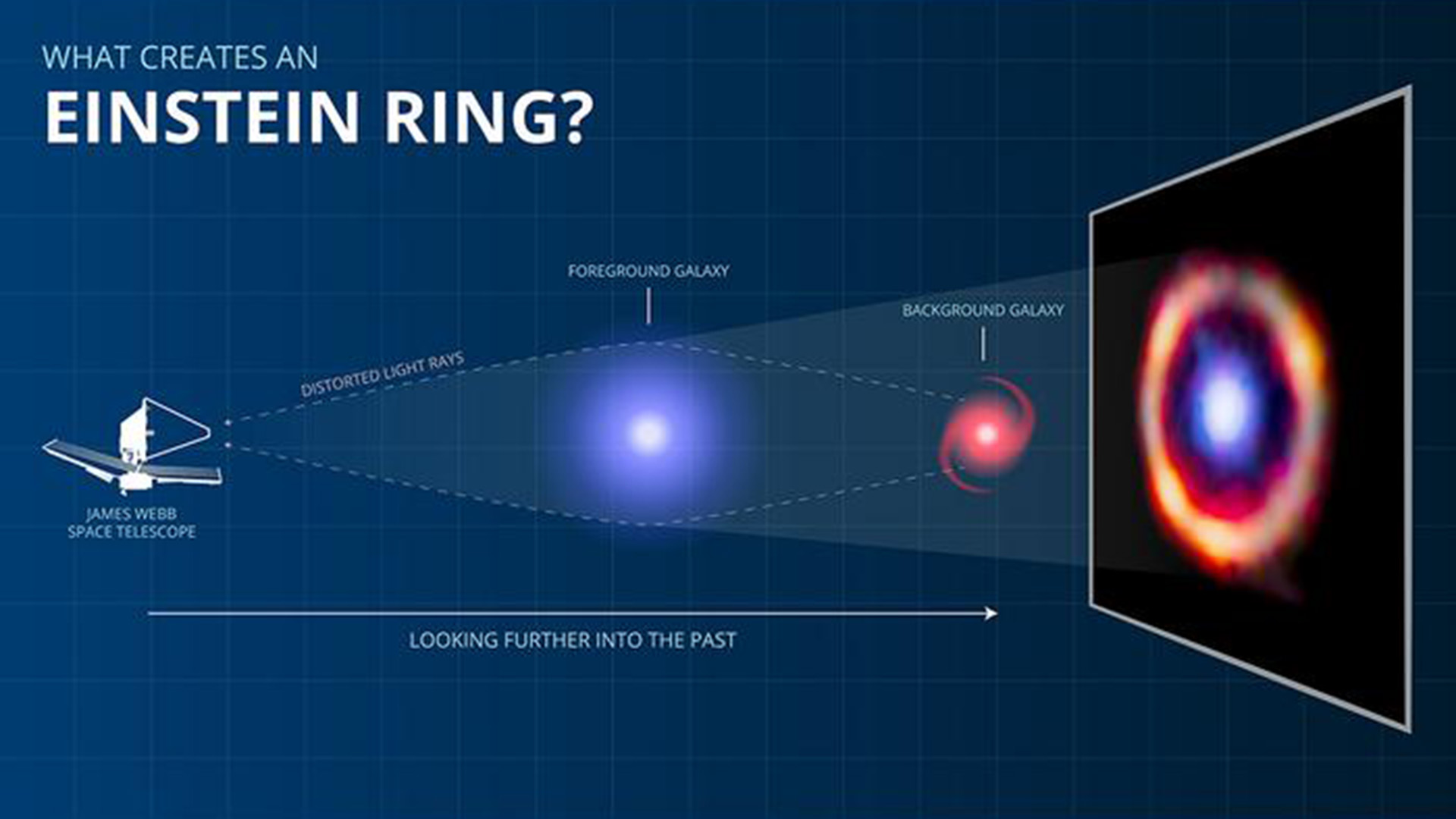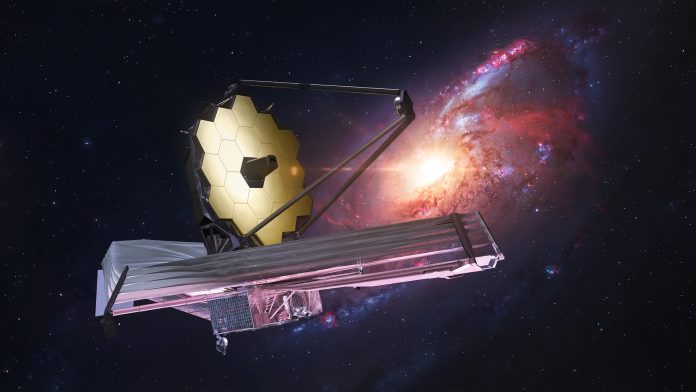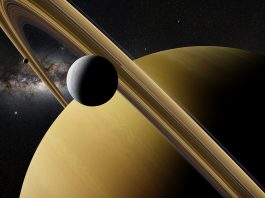US researchers have identified complex organic molecules 12 billion light-years from Earth using NASA’s James Webb Space Telescope (JWST).
Conducted by experts from the University of Illinois Urbana-Champaign and Texas A&M University, the research detected organic molecules in SPT0418-47 – the most distant galaxy these molecules have ever been discovered.
These types of organic molecules are also found on Earth in smoke, soot, and smog, and are the essential building blocks for supporting early forms of life.
The breakthrough is the latest achieved by the unparalleled capabilities of the recently launched JWST and provides vital insights into the complex chemical interactions that forged galaxies in the early Universe.
University of Illinois Urbana-Champaign graduate student Kedar Phadke, who led the technical development of the team’s Webb observations, said: “Discoveries like this are precisely what Webb was built to do: understand the earliest stages of the Universe in new and exciting ways.
“It’s amazing that we can identify organic molecules billions of light-years away that we’re familiar with here on Earth, even if they show up in ways we don’t like, like smog and smoke. It’s also a powerful statement about the amazing capabilities of Webb that we’ve never had before.”
SPT0418-47 provides a look at the early Universe
The SPT0418-47 galaxy was initially discovered in 2013 by the National Science Foundation’s South Pole Telescope and has subsequently been studied by various observatories, including the radio telescope ALMA and the Hubble Space Telescope.

The galaxy is located 12 billion light-years from Earth – a time when the Universe was just 1.5 billion years old – just 10% of its age. A phenomenon known as gravitational lensing was key to the discovery.
Joaquin Vieira, astronomy and physics professor at the University of Illinois Urbana-Champaign, commented: “Before having access to the combined power of gravitational lensing and the JWST, we could neither see nor spatially resolve the actual background galaxy through all of the dust.”
What is gravitational lensing?
Gravitational lensing was originally predicted by Albert Einstein’s theory of relativity and occurs when two galaxies are almost perfectly aligned from Earth.
This causes the light from the background galaxy to be magnified by the foreground galaxy into a ring-like shape known as an Einstein ring. The gravitational lensing magnified SPT0418-47 by a factor of 30-35.

Texas A&M University astronomer Justin Spilker explained: “By combining Webb’s amazing capabilities with a natural ‘cosmic magnifying glass,’ we were able to see even more detail than we otherwise could.
“That level of magnification is actually what made us interested in looking at this galaxy with Webb in the first place because it really lets us see all the rich details of what makes up a galaxy in the early universe that we could never do otherwise.”
What organic molecules were discovered?
Webb’s spectroscopic data revealed that the obscured interstellar gas in SPT0418-47 is rich in heavy elements, suggesting that stars have already lived and died in the galaxy.
The organic molecules discovered are called polycyclic aromatic hydrocarbon (PAH), which are emitted by combustion engines or forest fires on Earth. These organic molecules comprise carbon chains that are essential in forming life as we know it.
Vieira concluded: “We didn’t expect this. Detecting these complex organic molecules at such a vast distance is game-changing regarding future observations.
“This work is just the first step, and we’re just now learning how to use it and learn its capabilities. We are very excited to see how this plays out.”









